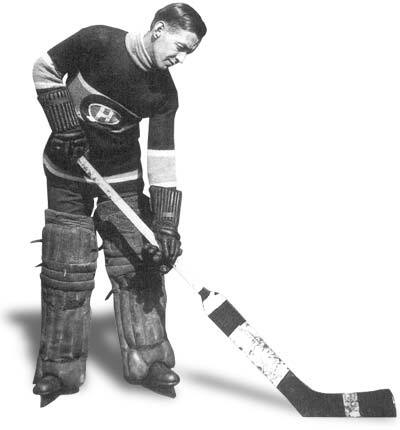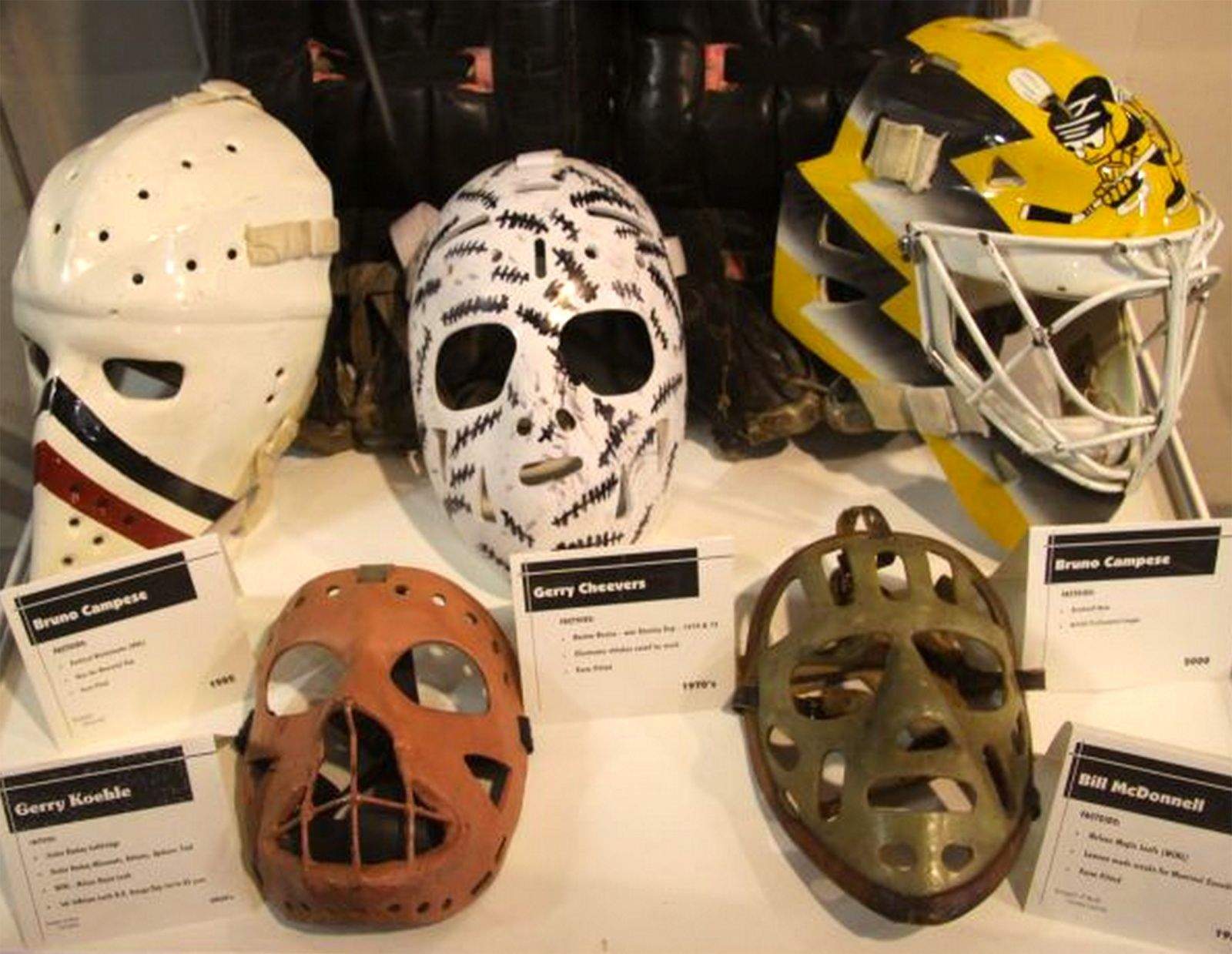In the fast-paced, high-impact world of ice hockey, few roles are as critical—or as vulnerable—as that of the goaltender.
As the final line of defense, goalies have always faced a barrage of pucks, sticks, and collisions. That’s why the evolution of goalie equipment isn’t just a matter of innovation; it’s a story of safety, performance, and the changing nature of the sport itself.
In this guide, we’ll explore how goalie gear has changed over time—tracing its roots, highlighting major innovations, and looking ahead to the future of goaltending protection.

Historical Milestones in Goalie Equipment
Looking back at the NHL history timeline shows us how far equipment has come over the years. Goaltenders in hockey’s early days faced opponents with little more than leather gloves, rudimentary leg pads, and an iron will. The first goalie equipment in the early 1900s consisted of cricket-style leg pads and thick wool or felt gloves. Helmets were nonexistent, and goalies often played bare-faced—until injury or fear made change inevitable.
A key turning point came in 1959 when Jacques Plante wore the first fiberglass mask in an NHL game after suffering a facial injury. Initially mocked, his mask started a movement. Over time, goalie mask history evolved from simple fiberglass shells to modern hybrid masks made from carbon fiber and Kevlar composites.
The leg pads saw their own transformation—from bulky leather stuffed with deer hair to modern goalie pads crafted from synthetic foams and high-density plastics. These goalie gear changes weren’t just about weight or comfort; they reduced injuries and improved agility on the ice. Early shifts like these laid the foundation for the innovative, high-performance gear goalies rely on today.

Key Innovations in Goalie Masks and Pads
The 1980s and 1990s ushered in a golden era of gear innovation. Masks incorporated stronger materials and better airflow. Pads became more lightweight, allowing for quicker lateral movement and improved rebound control. These upgrades gave goalies the tools to react faster, play more confidently, and stay better protected during high-pressure moments.
These developments weren’t only about safety. They enabled new styles of play—particularly the butterfly goaltending technique, which relies on dropping to the knees to block low shots. This shift in goaltending style pushed the redesign of leg pads to protect the knees and hips while allowing quick transitions between stances. Without these changes, modern goaltending techniques like the butterfly would never have gained traction at the professional level.
The transition from leather to advanced synthetics like high-density foam and moisture-wicking fabrics allowed for better mobility and durability. And new materials such as carbon fiber not only enhanced safety but helped regulate temperature and reduce sweat absorption. Together, these materials set a new standard for what goalie gear could achieve in both performance and player safety.
Wondering what the latest equipment looks like in action? Explore our selection of modern goalie pads and protective goalie masks to find gear that balances top-tier protection with pro-level comfort—engineered to meet the demands of today’s game.
The Role of Goalies in Hockey and Their Equipment
As the goalie equipment evolved, so did the expectations and responsibilities of the goaltender. Early goalies focused on standing upright and reacting to shots. Today’s goaltenders train for agility, play-reading, and puck handling; gear must accommodate this dynamic shift.
Today’s goalie must move quickly across the crease, track pucks through traffic, and recover from awkward positions. Lightweight chest protectors, customized skates, and contoured leg pads help balance safety with performance. As a result, equipment design now plays a direct role in shaping goalie development and in-game performance.
These performance enhancements have also prompted debates on fairness and overprotection. Some critics argue that modern equipment, particularly oversized chest protectors and pants, artificially increase a goalie’s coverage area. That’s led to changes in regulations—and even reductions in allowable pad sizes. Rule changes aim to preserve competitive balance while still prioritizing goalie protection and mobility.

Modern Materials and Innovations
The materials used in modern goalie gear are light-years ahead of their ancestors. High-density polyethylene (HDPE), multiple-layer foams, memory foams, and shock-absorbing gels are now common in pads and modern glove styles. These cutting-edge materials have redefined what goalies can expect from their gear in terms of both comfort and control.
Fiberglass has been replaced or reinforced with Kevlar, carbon fiber, and polycarbonate, providing superior protection against 100+ MPH slapshots. These innovations are designed to not only absorb impact but also redistribute force to reduce injury risk. With this level of protection, today’s goalies can focus more on positioning and anticipation rather than bracing for impact.
Customization is another modern feature. Goaltenders can now tailor gear to their playing style—adjusting pad flex, glove pocket size, and even color schemes for psychological advantage on the ice.
Impact on Goaltending Techniques and Rules
Just as the introduction of the first curved hockey stick reshaped offensive strategy, innovations in goalie equipment have dramatically transformed the defensive side of the game.
The evolution of goalie equipment has had a measurable impact on goaltending techniques and rules. As gear improved, goalies became more aggressive in positioning and more experimental in technique. Goalie play has subsequently become more strategic, technical, and specialized than ever before.
The rise of the butterfly goaltending technique required new pad shapes and improved knee and ankle protection. As leg pads extended in size and width, the NHL introduced new regulations to restrict pad dimensions, ensuring gear did not give unfair advantages. These restrictions continue to evolve in response to both performance demands and league-wide scoring trends.
The league also began scrutinizing blocker and glove sizes. These changes weren’t just about fairness—they were essential for keeping scoring balanced and the game exciting for fans. By tightening equipment standards, the NHL ensures that goaltending remains both skill-based and spectator-friendly.

The Future of Goalie Equipment
From bare faces and leather pads to engineered foams and carbon-fiber masks, the evolution of goalie equipment has shaped not just how goaltenders play—but how the game is played overall. Today’s gear is smarter, safer, and more sophisticated than ever, and innovation shows no signs of slowing down.
So, where does the evolution of goalie equipment go from here? Many manufacturers are exploring smart technology—gear embedded with sensors to track performance, fatigue, and impact forces. Such tools could revolutionize training, diagnostics, and injury prevention.
Sustainability is another emerging focus. With growing concern over environmental impact, companies are experimenting with recycled materials, longer-lasting composites, and cleaner production methods. This greater shift not only addresses environmental concerns but also reflects a broader industry trend toward responsible innovation.
Meanwhile, customization is expected to expand, with 3D scanning, AI-assisted design, and even biocompatible padding that adapts to the player’s movements in real time. Manufacturers can now fine-tune every aspect of a goalie’s gear to match their playing style, body type, and even recovery habits, helping to reduce fatigue, prevent injury, and ultimately enhance in-game confidence and performance.
The journey of goalie gear is far from over, but one thing is clear: evolution in equipment is inseparable from the evolution of the sport itself.


